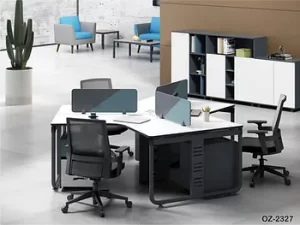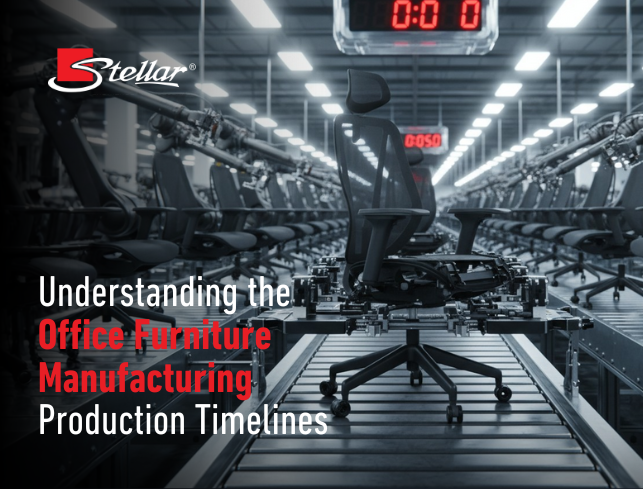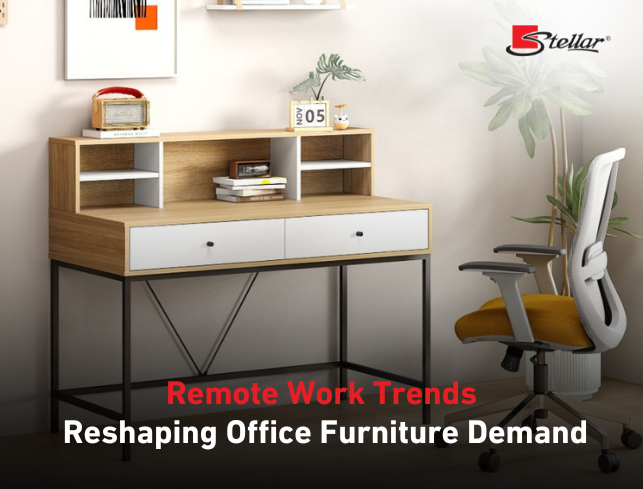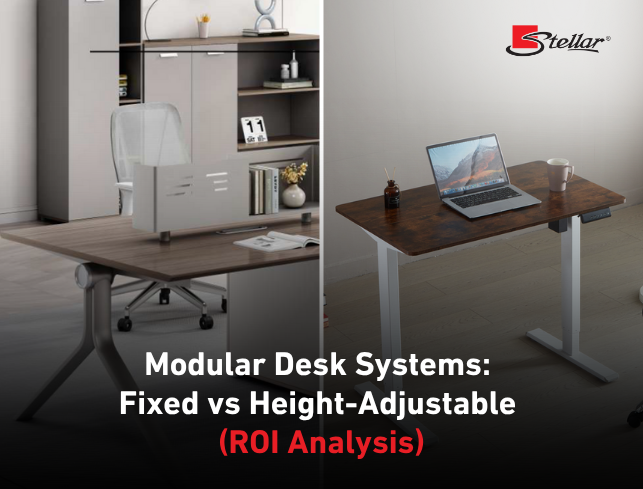
Here’s what our commercial interior design specialists have to say about all the office workstation pros and cons.
Sit-Stand Desks

Sitting for too long isn’t good for our bodies, but neither is standing too long. If your employees would like to prioritize their health and wellness more in the new year, then a sit-stand desk may be a good option. These are adjustable so that an employee can sit or stand as they work according to their task or preferences. It helps reap the benefits of both options, with the desk height giving employees the ability to relax in an ergonomic position or increase their energy and circulation by adjusting it to a higher standing position. Sit-stand desks are a great option if your employees tend to move around during work rather than staying in one place for 8 hours a day.
Benching stations

These are long desks that can accommodate multiple employees along each length of the desk. Employees face one another and are separated by shelving or partitions. This is a very popular setup for open-plan offices, and it allows employees to talk easily to their immediate neighbors and collaborate without having to get up from their seats. If you want to implement this solution, it’s also important to consider social distancing and privacy, as employees are in very close proximity to one another. It may also be too noisy for some employees, as large clusters of benching stations can be quite disruptive if people are constantly talking to one another.
L-stations
These are quite traditional workstations where a desk is positioned against a filing cabinet or shelving to create an L-shape. In many ways, it resembles a cubicle without walls. Ideal for single users, it is automatically socially distanced and private when positioned correctly. This is best suited to workplaces where employees have assigned desks, where storage is needed, where employees need privacy to meet with clients, and where you can easily space out your employees over your floor plan. If you are short on floor space, require your employees to easily communicate and collaborate, or need to accommodate many employees at the same time, having just these workstations may not be the most productive or efficient for your operation.

Team stations
Workstations like these are modular and can be formed into clusters so that each cluster can be assigned to a different team. They can include privacy walls and shields, storage space, and different shapes and configurations, but the end purpose – to allow a group of people to work together in one area – is the same. This allows for easy collaboration without disturbing nearby non-team members or having to move into breakout space. They’re ideal for organizations that have set teams who work frequently together or even key departments, but they don’t offer much privacy for team members. If employees need to work as a team but also need to meet with clients on occasion, you will likely need to include a separate, private meeting space in your design.







